Key Takeaways
- The best debt settlement companies can potentially reduce your unsecured debt by 30-50%, with top providers like National Debt Relief and Freedom Debt Relief showing consistent results for thousands of clients.
- Legitimate debt settlement requires no upfront fees—companies only get paid after successfully negotiating your debt (typically 15-25% of enrolled debt).
- Debt settlement will temporarily lower your credit score but offers a faster path to financial recovery than minimum payments or bankruptcy for those with $7,500+ in unsecured debt.
- Before choosing a debt settlement company, verify they’re licensed in your state through the NMLS Consumer Access portal to avoid scams and illegal operators.
- Most debt settlement programs take 24-48 months to complete, with the first settlements typically occurring within 4-6 months of enrollment.
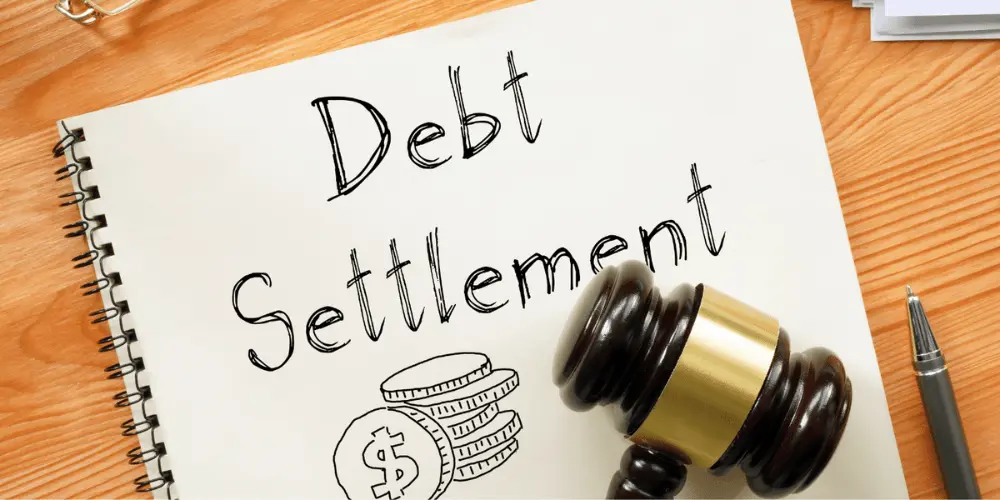
“Navigate Debt Settlement Agreements …” from www.cp-law.com and used with no modifications.
If you’re drowning in debt and minimum payments barely make a dent, you’re not alone. Millions of Americans are searching for legitimate debt relief options as credit card interest rates continue to soar past 20%. A trusted debt settlement company can negotiate with your creditors to reduce what you owe—often by 30-50%—helping you become debt-free faster than you might think possible.
But here’s the critical part: choosing the wrong company can make your financial situation worse. Some charge illegal upfront fees, make promises they can’t keep, or aren’t even licensed to operate in your state. That’s why we’ve thoroughly researched and vetted the top providers to create this comprehensive guide to the best debt settlement companies available in 2025.
Drowning in Debt? Here’s Your Lifeline to Financial Freedom
The average American with credit card debt now carries a balance of over $7,000 with interest rates making it nearly impossible to get ahead. If you’re struggling with overwhelming debt from credit cards, medical bills, or personal loans, debt settlement offers a structured path to reduce what you owe without filing for bankruptcy. This process involves negotiating with creditors to accept a lump sum that’s less than your full balance—sometimes as low as 40-60% of the original amount—allowing you to resolve debts for less than you owe and rebuild your financial foundation.
Why Debt Settlement Might Be Your Best Option
Debt settlement makes the most sense when you’re facing financial hardship that prevents you from keeping up with minimum payments. Unlike debt consolidation (which requires good credit) or debt management plans (which don’t reduce principal), debt settlement directly tackles the core problem: reducing the actual amount you owe. This approach is particularly effective for those with $7,500 or more in unsecured debt who need significant relief and want to avoid the long-lasting consequences of bankruptcy. With settlement, many clients become debt-free in 24-48 months while saving thousands compared to making minimum payments for years or even decades.
What You’ll Discover in This Guide
- A transparent breakdown of how the debt settlement process actually works (the 4-step method)
- Detailed reviews of the 7 best debt settlement companies, including fees, minimum requirements, and where they’re licensed to operate
- Critical red flags to watch for when evaluating debt relief companies (and how to verify legitimacy)
- A side-by-side comparison of debt settlement vs. other relief options to determine which is right for your situation
- Expert tips for finding licensed providers in your specific state and avoiding common scams
- Answers to the most frequently asked questions about debt settlement
How Debt Settlement Actually Works (4-Step Process)
Before diving into company reviews, it’s important to understand exactly how legitimate debt settlement works. Many companies gloss over the details, but knowing the process helps you set realistic expectations and identify trustworthy providers.
1. Free Debt Consultation and Eligibility Check
The process begins with a no-obligation consultation where debt specialists review your financial situation. They’ll ask about your total debt amounts, types of debt (credit cards, medical bills, personal loans), current income, and monthly expenses. This assessment helps determine if you’re a good candidate for debt settlement. Generally, you’ll need at least $7,500 in unsecured debt and be experiencing genuine financial hardship that prevents you from maintaining minimum payments.
If you qualify, the company will create a personalized plan showing your estimated monthly payment, potential savings, and program length. Reputable companies provide this consultation for free and never pressure you to enroll immediately—they should encourage you to review all documentation carefully before deciding.
2. Building Your Settlement Fund
Once enrolled, you’ll stop making payments directly to creditors and instead deposit money monthly into a dedicated settlement account that you control. This might seem counterintuitive, but it’s a necessary part of the process—creditors are unlikely to settle if you’re keeping up with regular payments. Your monthly deposits are typically less than your current minimum payments, providing immediate monthly relief while building leverage for negotiations.
During this phase, your debt settlement company should provide regular updates and help you handle any creditor calls or collection attempts. They’ll also work with you if you need to adjust your monthly deposit amount due to unexpected financial changes. This fund-building period typically takes 3-6 months before your account has enough money to begin settlement negotiations.
3. Negotiation with Your Creditors
Once your settlement fund has accumulated sufficient capital, your debt settlement company begins contacting creditors to negotiate reduced payoffs. This is where experienced negotiators make all the difference. The best companies employ teams who understand creditor patterns, settlement thresholds, and optimal timing to secure the largest possible reductions. Most companies prioritize negotiating accounts that are likely to settle quickly or those facing imminent legal action.
When a creditor agrees to a settlement, you’ll review the offer and approve it before any money leaves your account. The settlement is then paid from your dedicated account, and you’ll receive official documentation that the debt is satisfied. This phase continues account by account until all your enrolled debts are resolved, with settlements typically occurring in order of opportunity rather than size or age of debt.
4. Debt Resolution and Financial Recovery
As settlements are finalized, you’ll receive written confirmation from each creditor stating the debt is resolved and no further payments are required. This documentation is crucial for your financial records and future credit repair efforts. Throughout this final phase, your debt settlement company should provide guidance on rebuilding your credit and maintaining financial stability.
Once all debts are settled, many programs include basic credit rebuilding resources to help you recover from the temporary impact of debt settlement. The entire process typically takes 24-48 months, though this varies based on your settlement fund contributions and how quickly creditors agree to settlements. Many clients see their first settlement within 4-6 months of enrollment.
Top 7 Debt Settlement Companies (Compared & Reviewed)
After evaluating more than 20 companies based on state licensing, BBB ratings, client reviews, transparency, fee structure, and settlement results, we’ve identified the seven best debt settlement companies operating in 2025. Each of these companies maintains compliance with FTC regulations (including no upfront fees), offers clear program terms, and demonstrates a proven track record of successful settlements.
| Company | Best For | Avg. Savings | Fees | BBB Rating | States Served |
|---|---|---|---|---|---|
| National Debt Relief | Overall Best Choice | 30-50% | 15-25% | A+ | 42 States |
| Freedom Debt Relief | Credit Card Debt | 25-45% | 15-25% | A+ | 40 States |
| Accredited Debt Relief | Medical & Personal Loans | 30-50% | 15-25% | A+ | 33 States |
| New Era Debt Solutions | Lower Fees | 25-40% | 14-20% | A+ | 42 States |
| CuraDebt | Tax & Business Debt | 30-50% | 20% | A | 38 States |
| Pacific Debt | West Coast Service | 30-50% | 15-25% | A+ | 32 States |
| DMB Financial | Custom Payment Plans | 30-50% | 20-25% | A- | 27 States |
National Debt Relief: Best Overall for Most People

“National Debt Relief Review: How Their …” from www.debt.org and used with no modifications.
National Debt Relief stands out as our top overall recommendation due to their consistent settlement results, excellent customer service, and high volume of positive reviews across multiple platforms. As the largest debt settlement company in America, they’ve helped over 750,000 clients resolve more than $10 billion in debt. Their experienced negotiating team averages settlements between 30-50% of original balances, with fees ranging from 15-25% of enrolled debt (paid only after successful settlements).
What sets National Debt Relief apart is their transparent communication throughout the process and their money-back guarantee if they can’t settle your debts. Their online client dashboard allows you to track progress in real-time, and their customer service team receives consistently high marks for accessibility and knowledge. With an A+ BBB rating and over 25,000 reviews averaging 4.8/5 stars, they maintain the strongest reputation in the industry.
“After struggling with credit card debt for years, National Debt Relief helped me settle $42,000 for just over $21,000. Their team was with me every step of the way, and I never felt judged or pressured. I’m now completely debt-free for the first time in a decade.” — Marcus T., Florida
Freedom Debt Relief: Best for Credit Card Debt
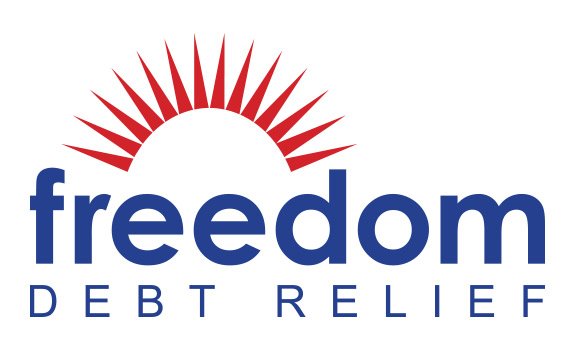
“Logos | Freedom Debt Relief” from www.freedomdebtrelief.com and used with no modifications.
Freedom Debt Relief specializes in credit card debt settlement and has successfully resolved over $15 billion in debt since 2002. Their team includes former credit card company employees who understand internal settlement policies and leverage this insider knowledge to secure substantial reductions. This specialized expertise makes them particularly effective with major credit card issuers like Chase, American Express, Discover, and Capital One.
Their program is designed for those with $7,500+ in unsecured debt, offering a straightforward fee structure of 15-25% of enrolled debt (collected only after settlements). Freedom maintains an extensive database of previous settlements that allows them to accurately predict likely outcomes for clients with similar debt profiles. Their mobile app and client portal provide exceptional transparency, allowing you to track negotiations and settlements in real-time.
Accredited Debt Relief: Best for Medical & Personal Loans
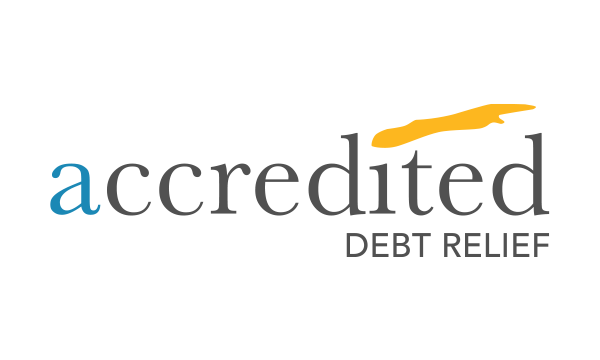
“Accredited Debt Relief for Debt …” from www.nerdwallet.com and used with no modifications.
Accredited Debt Relief has built a strong reputation for successfully settling non-credit card debt, particularly medical bills and personal loans. Their negotiators have specialized experience dealing with hospital billing departments, collection agencies, and private lenders—who often settle more readily than major banks. With fees ranging from 15-25% and consistent settlement savings of 30-50%, they provide strong value for those with diverse debt portfolios.
New Era Debt Solutions: Best for Lower Fees
“New Era Debt Solutions” from neweradebtsolutions.com and used with no modifications.
New Era Debt Solutions stands apart in the industry with their lower fee structure, charging between 14-20% of settled debt compared to the industry standard of 15-25%. Founded in 1999, they’ve maintained an A+ BBB rating and focus on transparency and customer education throughout the settlement process. Their minimum debt requirement is $10,000, and they’ve successfully settled over $250 million in debt for thousands of clients nationwide.
Unlike many competitors who contract with third-party negotiators, New Era handles all negotiations in-house, which allows for more consistent results and better client communication. They also provide free consultations and a detailed breakdown of expected outcomes before enrollment, giving potential clients a clear understanding of their path to becoming debt-free.
CuraDebt: Best for Tax & Business Debt
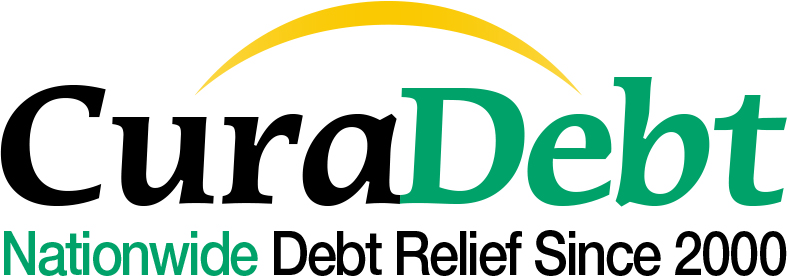
“Debt Settlement, Negotiation & Tax Debt …” from www.curadebt.com and used with no modifications.
While most debt settlement companies focus exclusively on consumer credit card debt, CuraDebt offers specialized services for tax debt resolution and business debt settlement in addition to standard consumer debt. With over 20 years of experience and an average savings of 30-50% before fees, they provide comprehensive solutions for entrepreneurs and small business owners facing financial difficulties.
CuraDebt’s tax resolution services include help with IRS tax liens, wage garnishments, and tax penalties, making them a one-stop solution for those with complex financial challenges. Their fee structure is straightforward at 20% of enrolled debt, and they require a minimum of $7,500 in unsecured debt to qualify. With strong client reviews and an A rating with the BBB, they’re a solid choice for those with varied debt types.
Pacific Debt: Best West Coast Provider
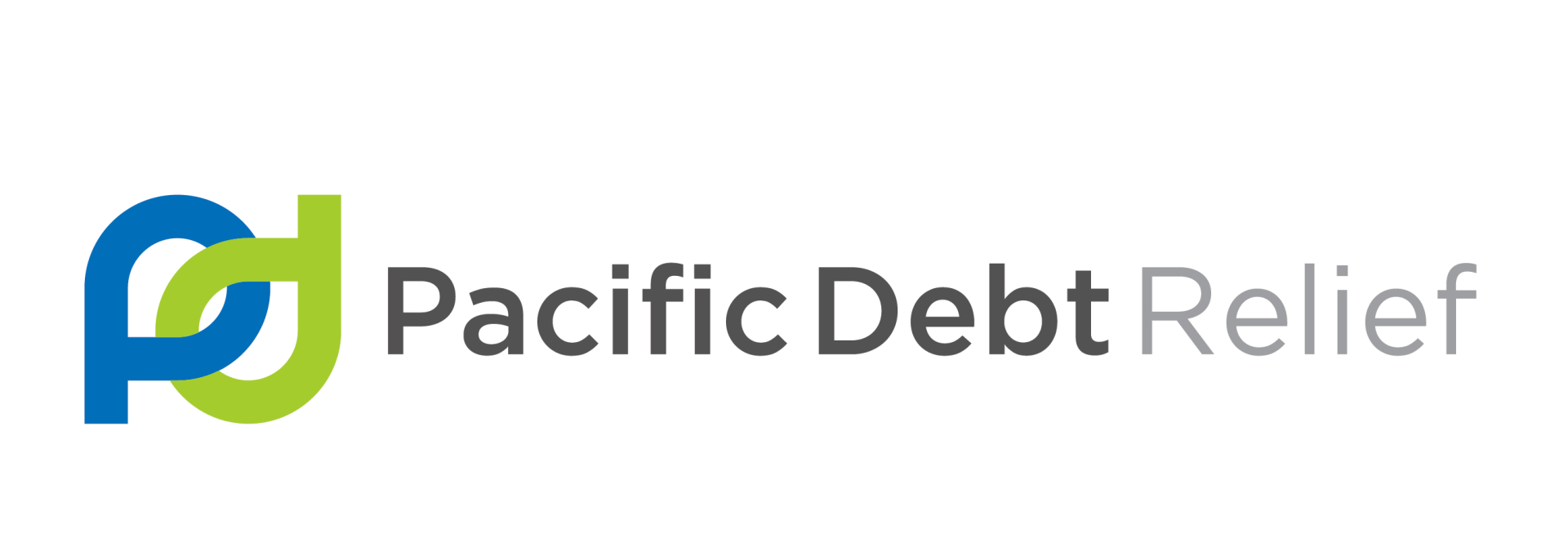
“Pacific Debt Relief To Reduce Credit …” from www.pacificdebt.com and used with no modifications.
For residents of western states, Pacific Debt offers localized service with strong results and personalized attention. Founded in 2002, they’ve settled over $300 million in debt and maintain high customer satisfaction ratings across review platforms. What distinguishes Pacific Debt is their dedicated account management approach—clients work with the same settlement specialist throughout the entire program, creating consistency and accountability.
If you’re considering other financial services, you might also want to explore the best credit repair services near you.
Pacific Debt requires a minimum of $10,000 in unsecured debt and charges fees between 15-25% of enrolled debt. Their typical settlements range from 30-50% of original balances, which is competitive within the industry. While they operate in 32 states, their strongest presence is in California, Oregon, Washington, Arizona, and Nevada, where they maintain specialized knowledge of state-specific debt laws and regulations.
DMB Financial: Best for Custom Payment Plans
“DMB Financial | LinkedIn” from www.linkedin.com and used with no modifications.
DMB Financial differentiates itself with highly flexible payment plans tailored to each client’s financial situation. While most companies require fixed monthly payments, DMB works with clients to develop contribution schedules that accommodate variable income, seasonal employment, or unexpected expenses. This flexibility makes them an excellent option for self-employed individuals, commission-based workers, or those with fluctuating income streams.
For those looking to improve their financial health, exploring credit repair services can be a beneficial step alongside debt settlement.
Operating since 2003, DMB requires a $7,500 minimum debt threshold and charges fees between 20-25% of enrolled debt. Their settlement percentages are comparable to industry leaders, averaging 30-50% savings before fees. Though they serve fewer states (27) than some competitors, their customized approach and strong client satisfaction make them worth considering if they operate in your region.
How to Choose the Right Provider for YOUR State
Selecting a debt settlement company isn’t just about finding the best reviews or lowest fees—it’s crucial to work with a provider that’s legally authorized to operate in your state. Debt settlement regulations vary significantly across the country, with some states imposing strict licensing requirements while others prohibit the practice entirely or severely limit fee structures.
State Licensing Requirements You Need to Know
Before engaging any debt settlement company, verify they’re properly licensed in your state of residence. Some states like Connecticut, Georgia, Illinois, North Carolina, and Oregon have particularly stringent requirements, while others like South Carolina and Vermont prohibit third-party debt settlement entirely. To protect yourself from unlicensed operators, check your state’s financial regulation department website for debt settlement licensing requirements.
Additionally, be aware that companies operating without proper licensing in your state may charge illegal fees, fail to maintain required bonds or insurance, or lack the necessary training to handle your case properly. Working with an unlicensed company puts you at risk of paying for services that may be unenforceable or even illegal in your jurisdiction.
How to Verify a Company’s Credentials Before Signing Up
Always verify a company’s credentials through official channels before sharing personal financial information or signing any agreements. The NMLS (Nationwide Multistate Licensing System) Consumer Access portal at https://nmlsconsumeraccess.org/ allows you to confirm if a company holds proper licenses in your state. Simply search the company name and verify their credentials and state authorizations.
Additionally, check the company’s standing with the Better Business Bureau, looking not just at their letter rating but also complaint history and resolution patterns. Legitimate companies should also be registered with relevant industry associations such as the American Fair Credit Council (AFCC), which requires members to adhere to strict consumer protection standards and ethical guidelines.
Don’t hesitate to request written verification of state licensing directly from the company. Reputable providers will readily share their licensing information, regulatory compliance details, and any state-specific disclosures required by law before you enroll in their program.
Debt Settlement vs. Alternatives — Which Is Right for You?

“Is Debt Settlement a Good Idea …” from credit.org and used with no modifications.
Debt settlement is powerful but isn’t the right solution for every financial situation. Understanding how it compares to other debt relief options helps you make an informed decision based on your specific circumstances, timeline, and financial goals.
| Option | Best For | Pros | Cons | Timeline |
|---|---|---|---|---|
| Debt Settlement | $7,500+ unsecured debt, can’t make minimum payments | Reduces principal by 30-50%, avoids bankruptcy | Credit score impact, potential tax consequences | 24-48 months |
| Debt Management Plan | Those with steady income who can make consistent payments | Lower interest rates, minimal credit impact | No principal reduction, requires full repayment | 36-60 months |
| Bankruptcy (Ch. 7) | Severe financial hardship with no recovery path | Eliminates most unsecured debt quickly | Severe credit impact, public record for 10 years | 3-6 months |
| Debt Consolidation Loan | Good credit (680+), stable income | Single payment, potentially lower interest | Requires good credit, doesn’t reduce principal | 36-60 months |
Debt Settlement: When It Makes the Most Sense
Debt settlement is typically the optimal choice when you’re facing significant financial hardship that prevents you from maintaining minimum payments but want to avoid bankruptcy. It’s particularly effective for those with unsecured debt from credit cards, personal loans, medical bills, private student loans, or old utility accounts. The ideal candidate can commit to regular deposits into a settlement fund but cannot reasonably pay off their full debt within 5 years through minimum payments.
This option provides substantial relief by reducing the actual principal owed, not just interest rates. However, it does temporarily impact your credit score and may have tax implications for forgiven debt amounts over $600. Despite these considerations, settlement often provides the fastest path to becoming debt-free for those experiencing genuine financial distress.
Debt Management Plans: Lower Interest, Not Principal
Debt management plans (DMPs) through non-profit credit counseling agencies focus on reducing interest rates and consolidating payments rather than reducing the principal amount owed. This approach works best for those with manageable debt levels who need help with organization and slightly lower interest rates but can still afford to repay the full amount over time.
DMPs have minimal impact on your credit score and typically take 3-5 years to complete. However, you’ll still pay back 100% of what you borrowed plus some interest, making this option less impactful than settlement for those with severe debt burdens. DMPs are ideal for those who want to protect their credit score while gaining some payment relief and simplification.
For those considering alternatives, exploring credit repair services might be beneficial.
Bankruptcy: The Last Resort Option
Chapter 7 bankruptcy provides the most immediate debt relief by eliminating most unsecured debts within 3-6 months, but at a significant cost to your financial future. This legal process creates a public record that remains on your credit report for 10 years and may impact employment, housing, and future credit opportunities for even longer.
Bankruptcy makes sense when you have overwhelming debt with no realistic path to repayment through other means. However, it should generally be considered only after exploring less damaging options like debt settlement. Additionally, not everyone qualifies for Chapter 7 bankruptcy—those with higher incomes may be required to file Chapter 13, which establishes a 3-5 year repayment plan instead of immediate debt discharge.
Debt Consolidation Loans: For Those with Good Credit
Debt consolidation involves taking out a new loan to pay off multiple existing debts, ideally at a lower interest rate. This approach simplifies your payments and may reduce overall interest costs, but it requires good-to-excellent credit (typically 680+) to qualify for favorable rates. Consolidation doesn’t reduce what you owe—it simply restructures it.
This option works best for those with manageable debt levels, good credit scores, and stable income who are primarily seeking organization and potential interest savings. If you’re already struggling to make minimum payments or have damaged credit, consolidation loans will likely be unavailable or offered at high interest rates that provide little benefit.
For those with damaged credit, exploring credit repair services might be a beneficial step before considering consolidation.
5 Red Flags to Avoid (Scam Warning!)
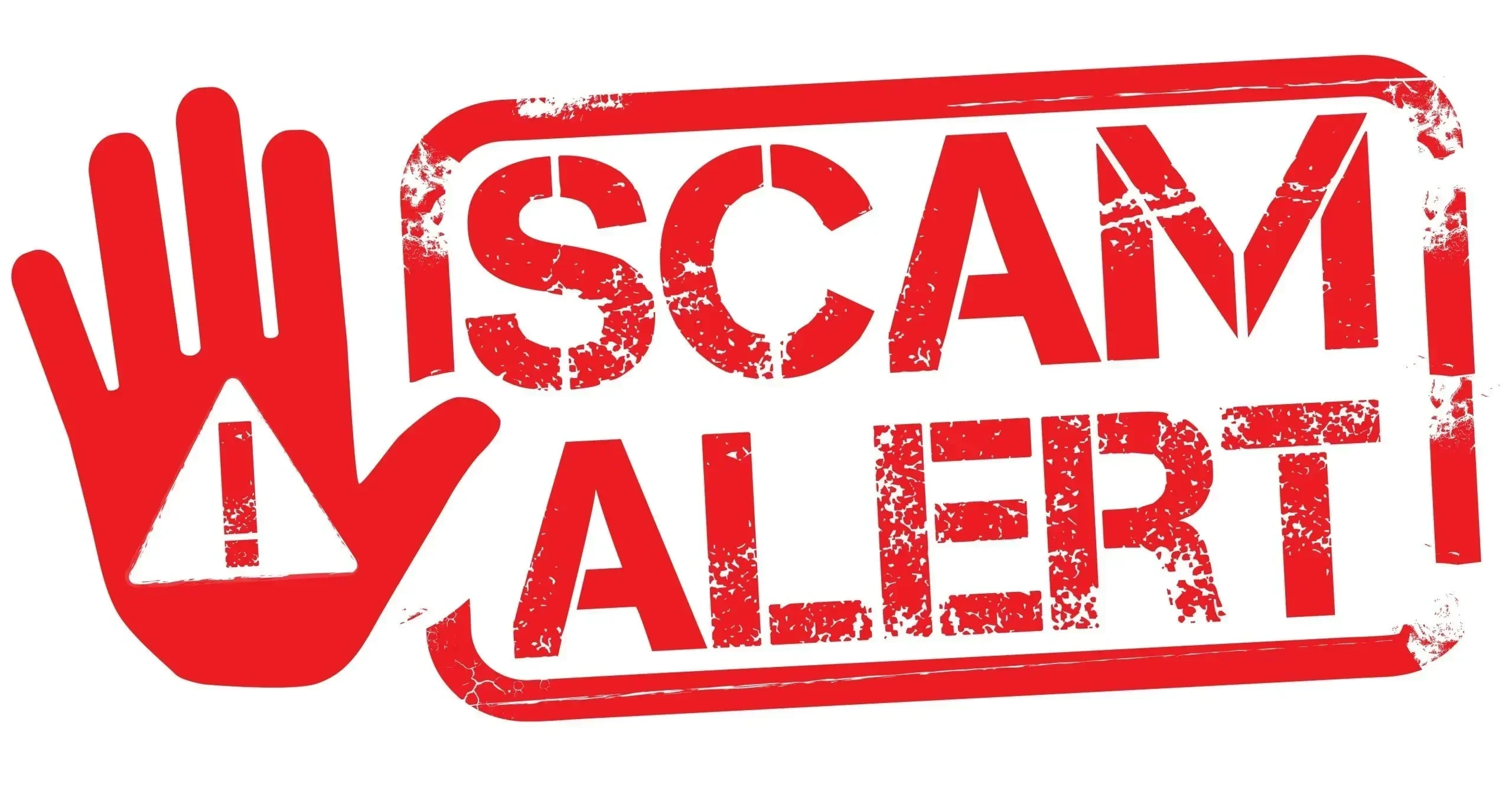
“Scam Alert | 4 County Electric” from www.4county.org and used with no modifications.
The debt relief industry attracts its share of unscrupulous operators looking to profit from financial desperation. Knowing these warning signs helps you avoid scams and work only with legitimate, ethical companies.
Upfront Fees: Illegal and a Major Warning Sign
Since 2010, the Federal Trade Commission has prohibited debt settlement companies from collecting any fees before they’ve successfully negotiated at least one of your debts. If a company asks for payment before delivering results, they’re violating federal law. Legitimate providers only collect fees after a debt has been successfully settled and you’ve approved the terms. This arrangement aligns their interests with yours—they don’t get paid unless they deliver actual savings.
Guaranteed Settlement Percentages: Impossible Promises
No reputable debt settlement company can guarantee specific settlement amounts or percentages because results depend on many factors outside their control, including creditor policies, your debt age, and account status. Be extremely wary of any company promising to settle your debts for “pennies on the dollar” or guaranteeing specific reduction percentages before evaluating your unique situation. Legitimate companies will provide estimates based on their past results but will acknowledge that each case is different and outcomes can vary.
No Physical Address or Missing Credentials
Legitimate debt settlement companies maintain physical office locations, hold required state licenses, and belong to industry associations like the American Fair Credit Council (AFCC). Before working with any provider, verify they have a real street address (not just a P.O. box), proper licensing in your state, and established industry credentials.
Companies that operate exclusively online with no verifiable physical presence often disappear when regulatory scrutiny increases, potentially leaving clients without recourse. Similarly, those without proper state licensing are operating illegally and may subject you to unexpected legal complications.
Always check the company’s NMLS registration and Better Business Bureau profile to confirm their legitimacy and review their complaint history before proceeding.
High-Pressure Sales Tactics
Reputable debt settlement companies provide information, answer questions, and give you time to make an informed decision without aggressive sales pressure. Be wary of representatives who create artificial urgency, claim “special programs” that expire quickly, or discourage you from reviewing contracts carefully before signing.
For those seeking alternatives, consider exploring credit repair services as a potential option.
Legitimate providers encourage you to read all documentation thoroughly, consult with family members or financial advisors if needed, and take reasonable time to consider your options. They should willingly explain all fees, potential risks, and program timelines without evasion or vague responses.
Unusual Payment Methods
Be extremely cautious if a debt relief company requests payment via gift cards, wire transfers, cryptocurrency, or other non-traditional payment methods that offer little consumer protection. Legitimate debt settlement companies typically use secure, traceable payment methods such as ACH transfers to dedicated accounts that you control.
Additionally, reputable providers clearly separate their fees from your settlement funds, often using third-party account management services to ensure transparency and security. Any company requesting direct access to your bank accounts or unusual payment arrangements is likely engaging in questionable practices.
Take Action: Find the Right Debt Settlement Company Near You
If you’re struggling with overwhelming debt and minimum payments aren’t making meaningful progress, now may be the time to explore debt settlement as a path to financial recovery. The right debt settlement company can help reduce your total debt burden, create a structured path to becoming debt-free, and provide the expertise needed to navigate creditor negotiations successfully.
Steps to Start Your Debt Relief Journey Today
Begin by gathering information about your current debt situation, including total amounts owed, creditor names, account numbers, and current interest rates. This information helps potential settlement companies provide accurate assessments of your options. Next, research providers licensed in your state using resources like the NMLS Consumer Access portal and the BBB. Focus on companies with strong track records, transparent fee structures, and positive client reviews. Schedule free consultations with 2-3 top candidates to compare their approaches, estimated timelines, and potential savings before making your decision.
What to Expect in Your First Consultation
During your initial consultation with a debt settlement company, expect a comprehensive review of your financial situation, including your income, expenses, assets, and debt details. The representative should explain their program structure, fee model, expected timeline, and potential outcomes based on your specific circumstances. They should answer all your questions clearly without pressure tactics and provide written information about their services, including all required legal disclosures for your state. A quality consultation focuses on education rather than sales, helping you understand if debt settlement is right for your situation regardless of whether you choose to enroll.
Frequently Asked Questions (FAQs)
As you consider debt settlement, you likely have questions about how the process works and its impact on your financial future. Here are answers to the most common questions we receive from readers exploring debt relief options.
Will debt settlement ruin my credit score?
Yes, debt settlement will temporarily lower your credit score, but the impact is often less severe than bankruptcy and more manageable in the long term than perpetual high-balance accounts. When you stop making payments to creditors as part of the settlement process, your accounts become delinquent, which negatively affects your credit score. These delinquencies typically cause a drop of 80-110 points, depending on your starting score and credit profile.
However, as debts are settled, your credit utilization ratio decreases, which begins the credit recovery process. The settled accounts will be reported as “settled,” “settled for less than full amount,” or “paid settled” rather than showing ongoing delinquency. While these notations remain on your credit report for seven years from the original delinquency date, their negative impact diminishes significantly after the first two years.
Many debt settlement clients see their credit scores begin to recover within 12-18 months of completing their program as they establish new positive credit history. Some companies also provide basic credit rebuilding guidance to help accelerate this recovery process.
It’s important to weigh this temporary credit impact against the alternatives: continuing to struggle with unmanageable debt (which eventually leads to defaults and collections anyway) or filing bankruptcy (which has a more severe and longer-lasting credit impact).
- Initial credit score drop: 80-110 points (varies by individual)
- First signs of credit recovery: Often within 12-18 months
- Settlement notations remain: 7 years from original delinquency date
- Impact diminishes: Significantly after 2 years
- Complete recovery: Typically 3-5 years after program completion with responsible credit use
How long does the debt settlement process take?
The complete debt settlement process typically takes 24-48 months from enrollment to completion, though this timeline varies based on your financial situation, debt amount, and how quickly you can build your settlement fund. Most clients see their first debt settlement within 4-6 months of enrollment as they accumulate enough funds to make meaningful settlement offers.
Several factors influence your program timeline. The amount you can contribute monthly to your settlement fund is the primary determinant—higher monthly deposits allow for faster settlements. Additionally, creditor policies affect timing, as some are more willing to negotiate early in the delinquency cycle while others prefer to wait until accounts are closer to charge-off status (typically 180 days past due).
For those looking to improve their financial standing, exploring credit repair services can be beneficial in conjunction with debt settlement strategies.
Your debt settlement company should provide a realistic estimated timeline during your initial consultation based on your specific debt portfolio and financial capacity. This estimate should include projections for when your first settlements might occur and when you can expect to complete the program.
While patience is required, debt settlement typically offers a faster path to debt freedom than minimum payments (which could take decades) or Chapter 13 bankruptcy (which typically requires a 5-year repayment plan).
- Typical program length: 24-48 months
- First settlements: Usually occur within 4-6 months
- Factors affecting timeline: Monthly contribution amount, creditor policies, total debt enrolled
- Completion rate: Approximately 50-60% of clients complete the full program
- Early exits: Some clients exit early after settling their largest or most problematic debts
Can all types of debt be settled?
Debt settlement works primarily for unsecured debts—those not backed by collateral. Credit cards, department store cards, personal loans, medical bills, private student loans, and some business debts typically respond well to settlement negotiations. However, secured debts like mortgages, auto loans, federal student loans, recent tax debt, and court-ordered obligations (like child support) cannot generally be settled through this process. Some companies like CuraDebt offer specialized programs for tax debt resolution that work differently from traditional debt settlement, but these are separate services with different approaches and success metrics.
What happens to my credit after debt settlement?
After completing debt settlement, your credit report will show each settled account as “settled,” “settled for less than full amount,” or similar notation, depending on the creditor’s reporting policies. These settlements remain on your credit report for seven years from the original delinquency date (not from the settlement date). However, as these accounts age and you establish new positive credit history, your score will gradually improve. Many clients are able to qualify for credit repair services within 12-18 months of program completion, though mortgage and auto loan approval may take longer. Following debt settlement with responsible credit practices—such as secured credit cards, keeping utilization low, and making all payments on time—accelerates the credit rebuilding process.
Is debt settlement taxable?
Yes, debt forgiveness may be taxable. When a creditor forgives more than $600 of debt through settlement, they are required to issue a 1099-C form reporting this as “cancellation of debt” income to the IRS. This means you may need to pay income tax on the forgiven amount unless you qualify for an exclusion.
The most common exclusion is insolvency, which means your total liabilities exceeded your total assets immediately before the debt was forgiven. If you can demonstrate insolvency, you may be able to exclude some or all of the forgiven debt from your taxable income by filing IRS Form 982.




Join the Conversation